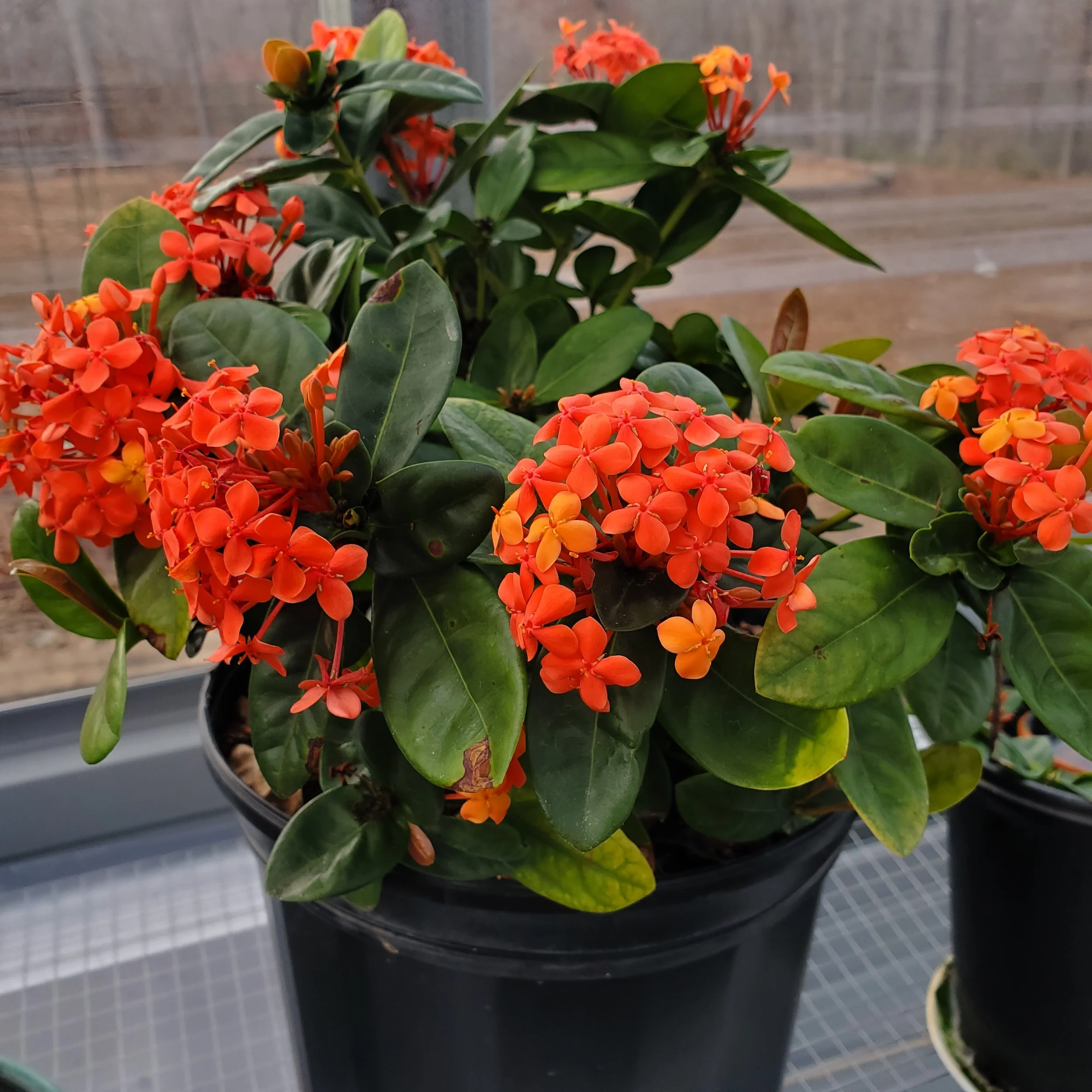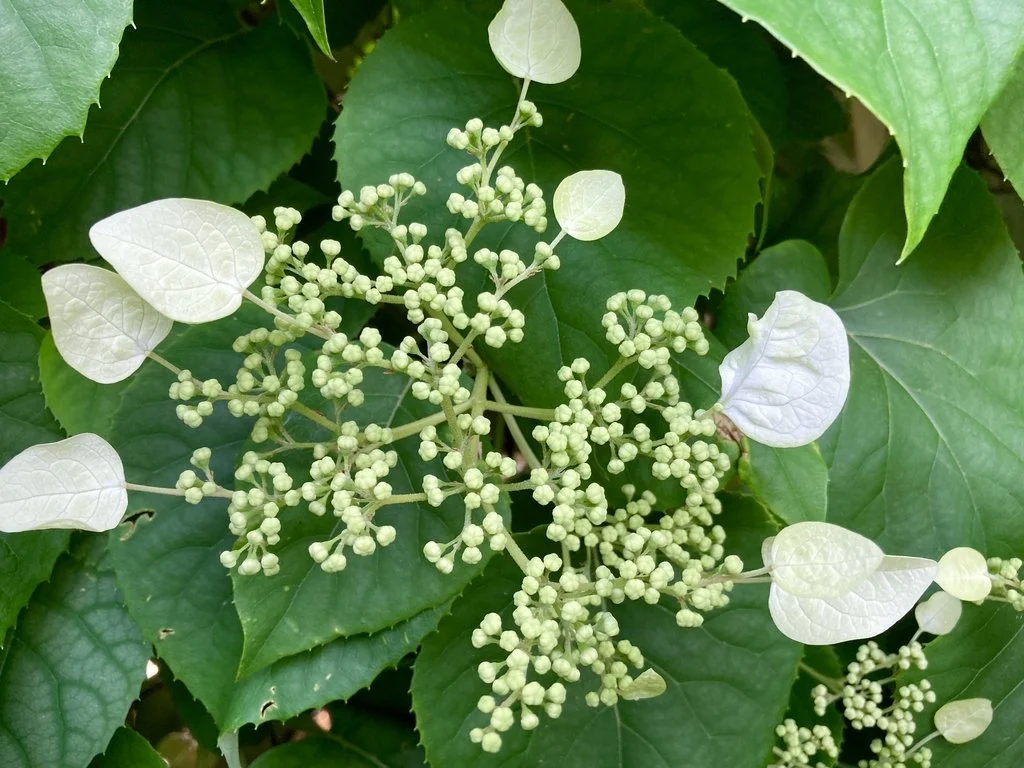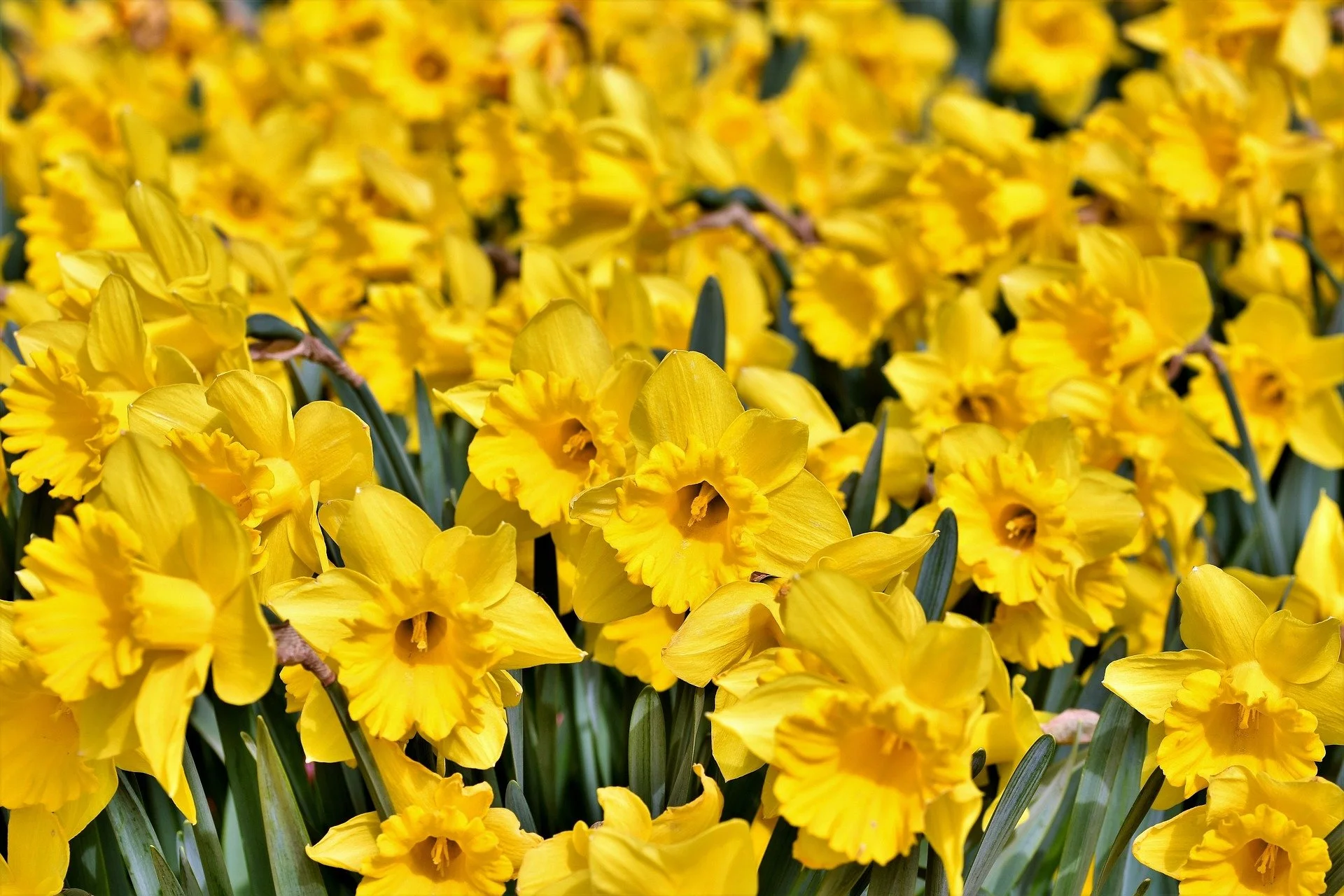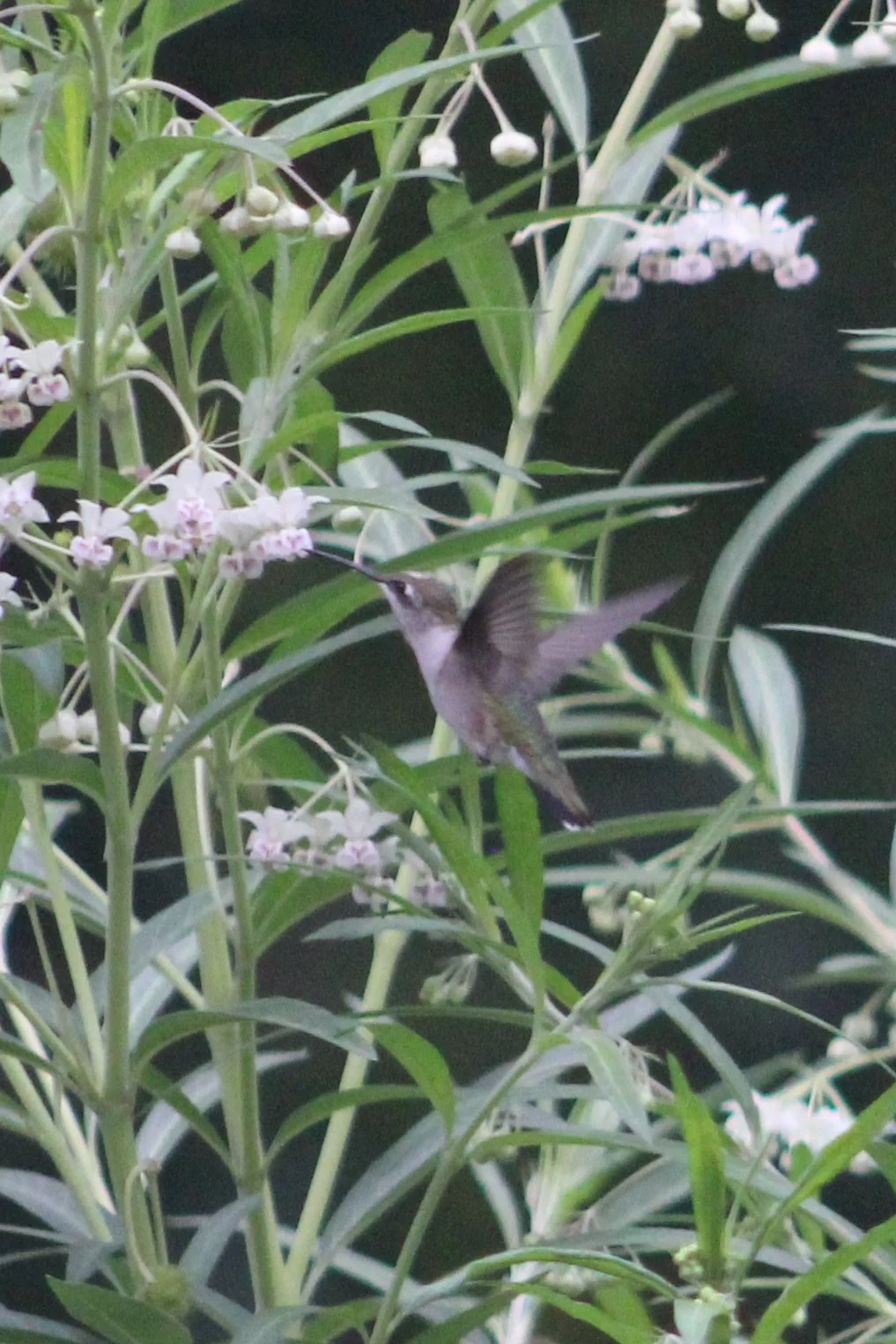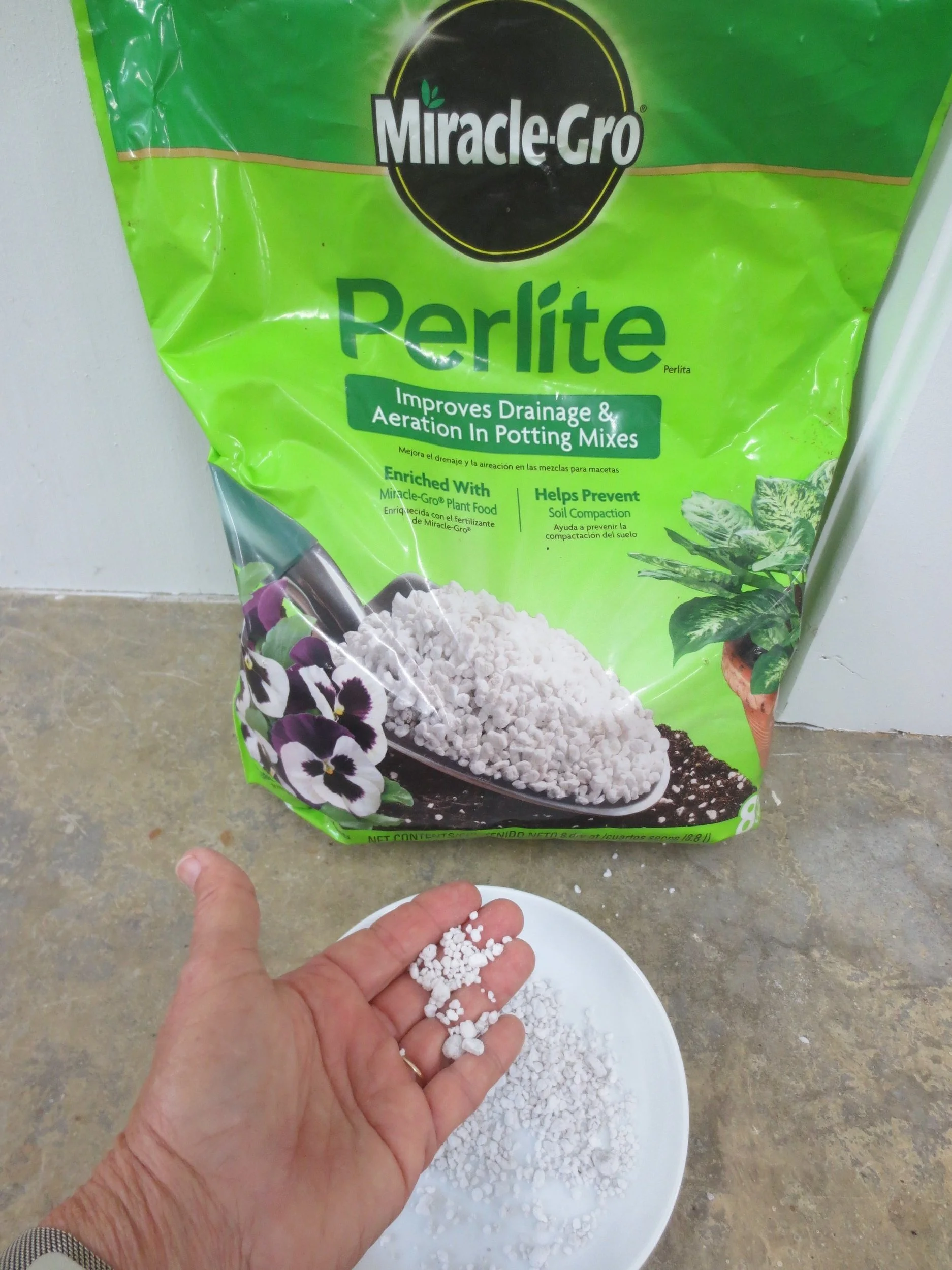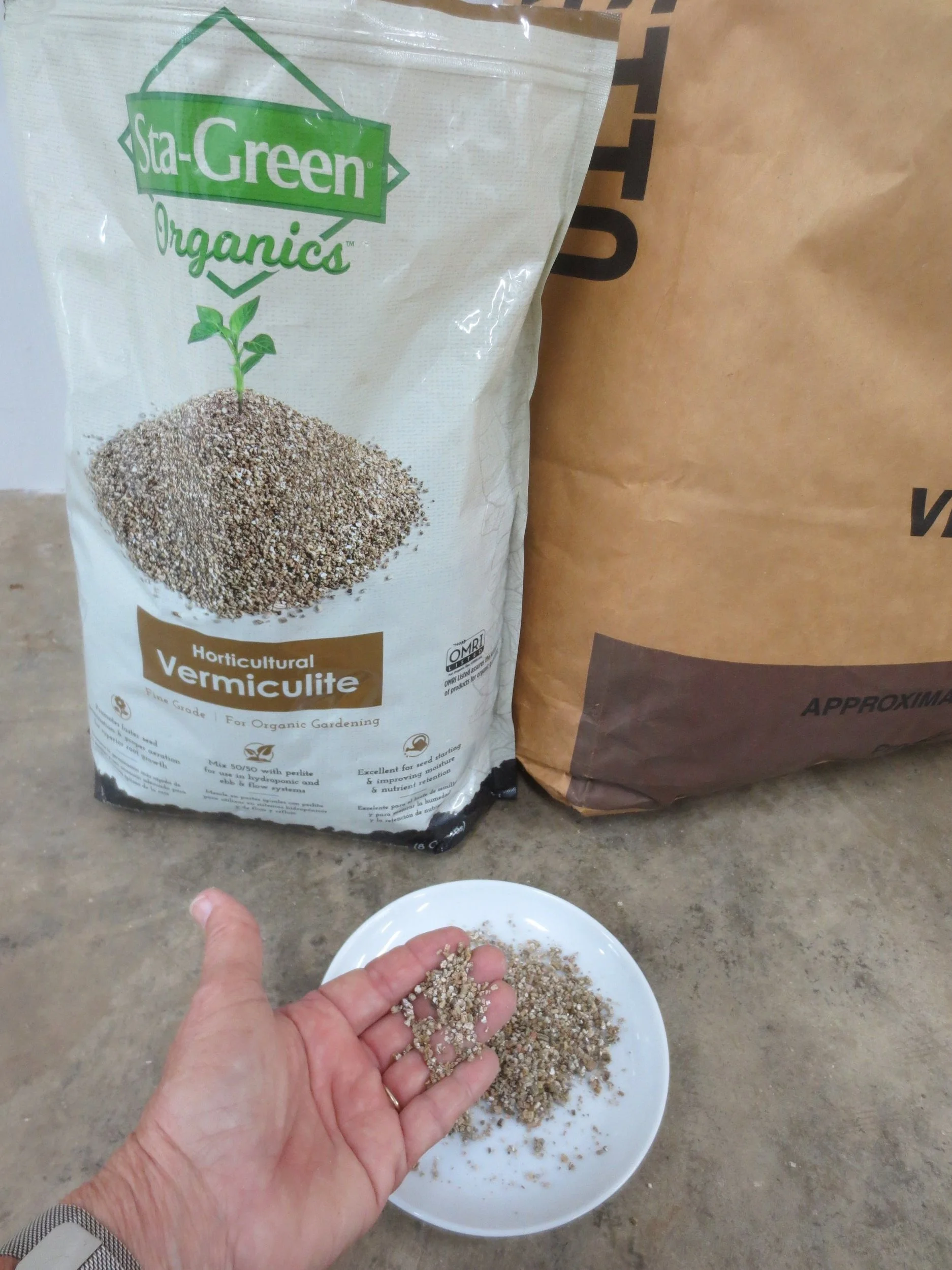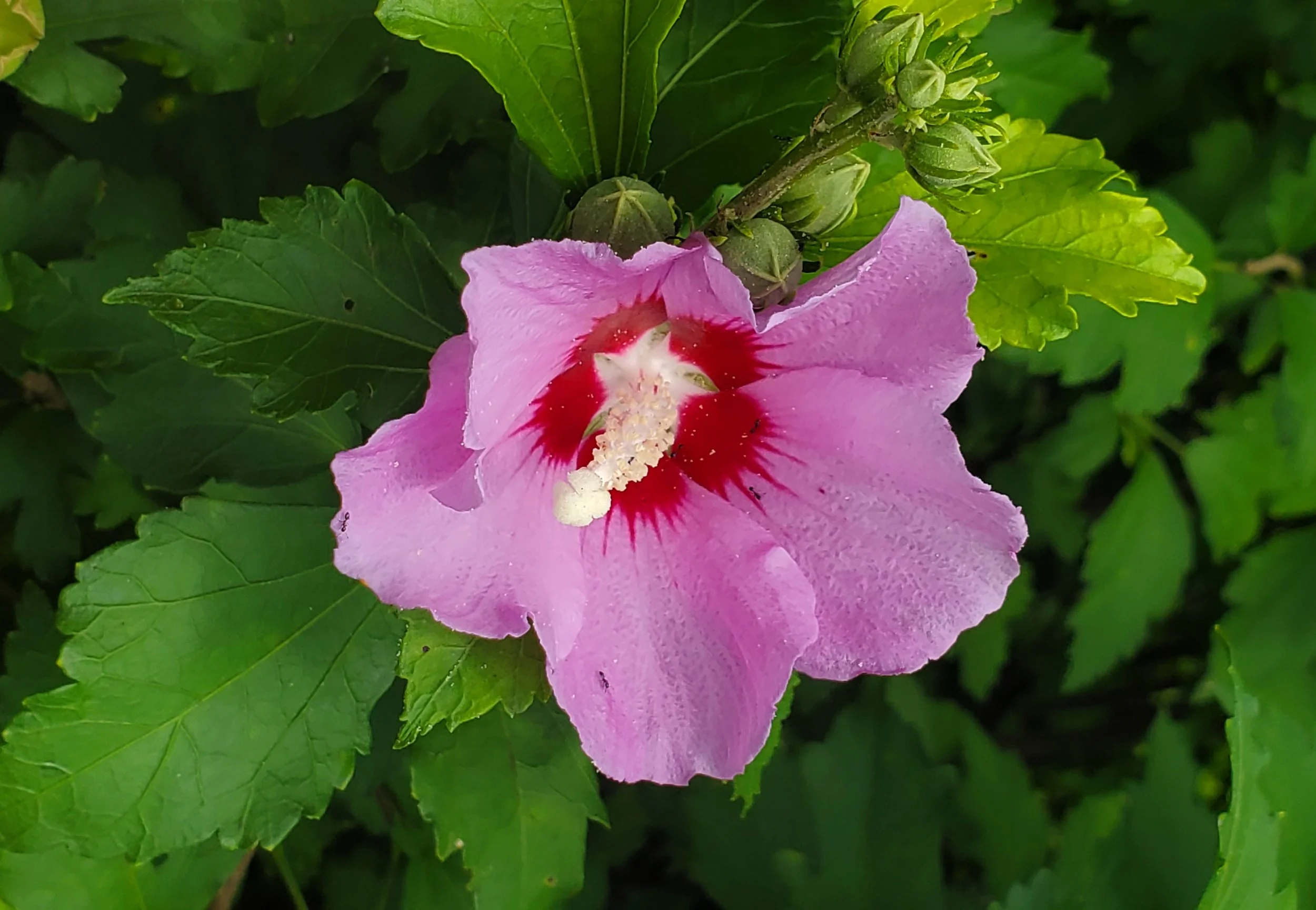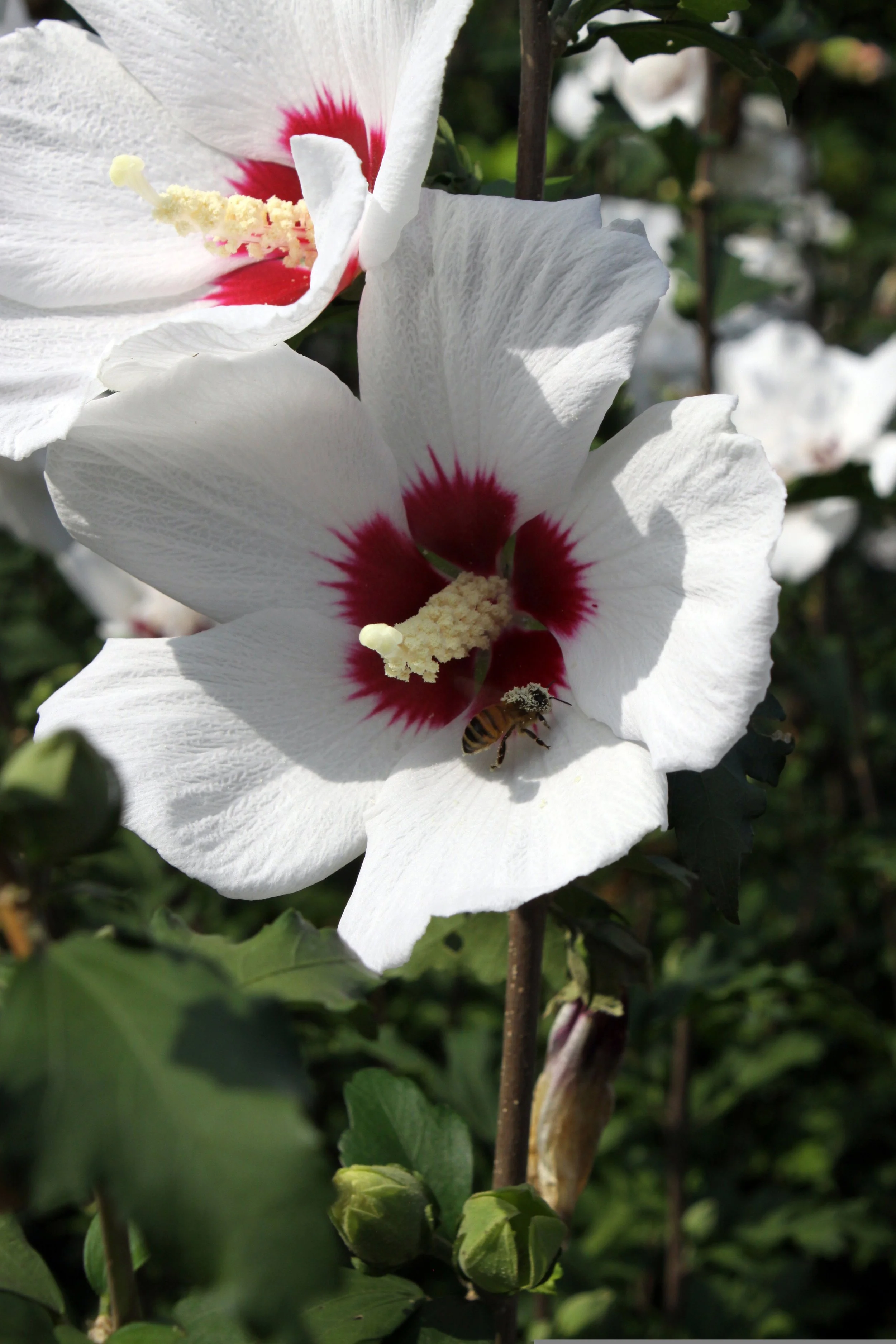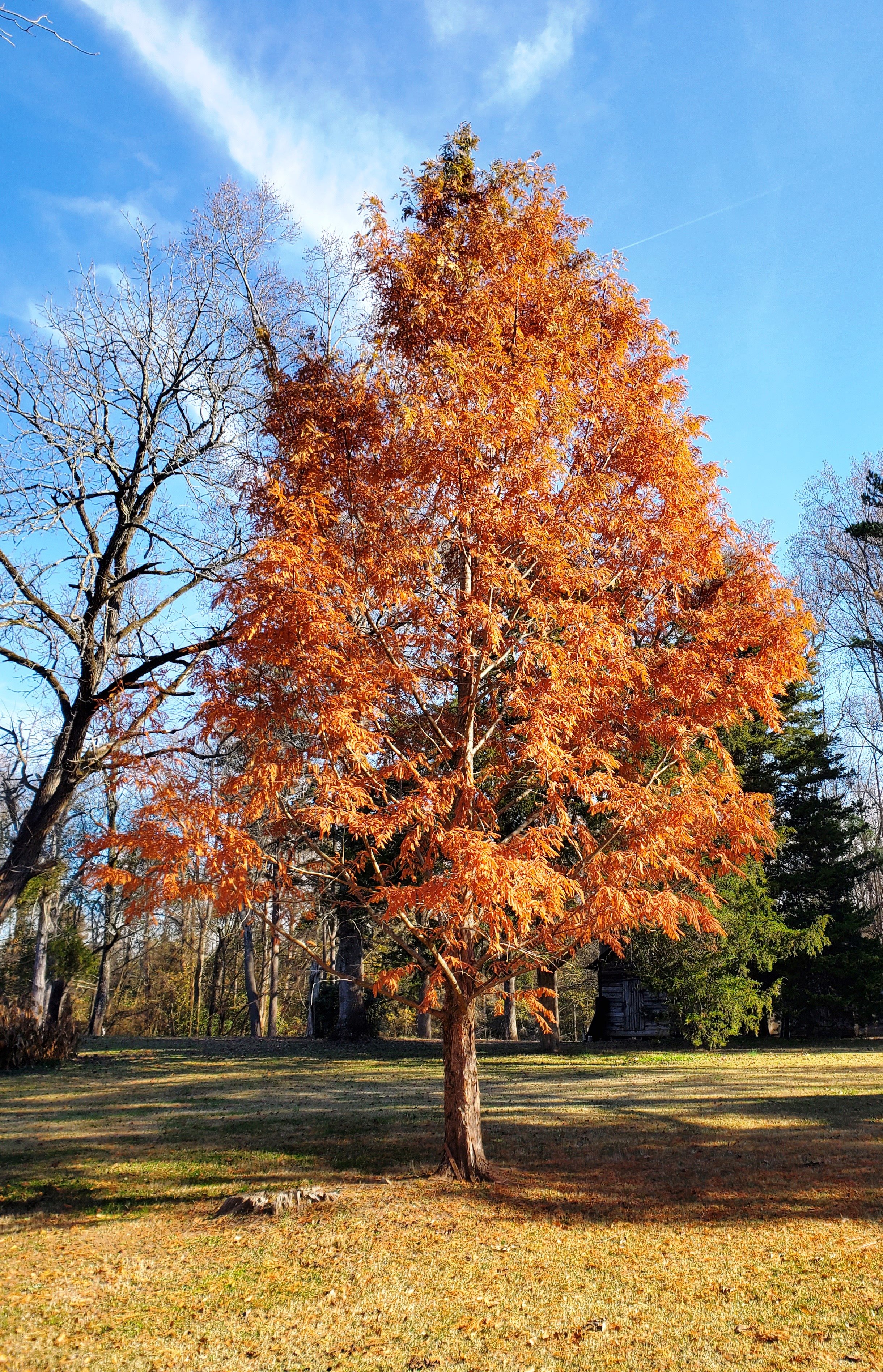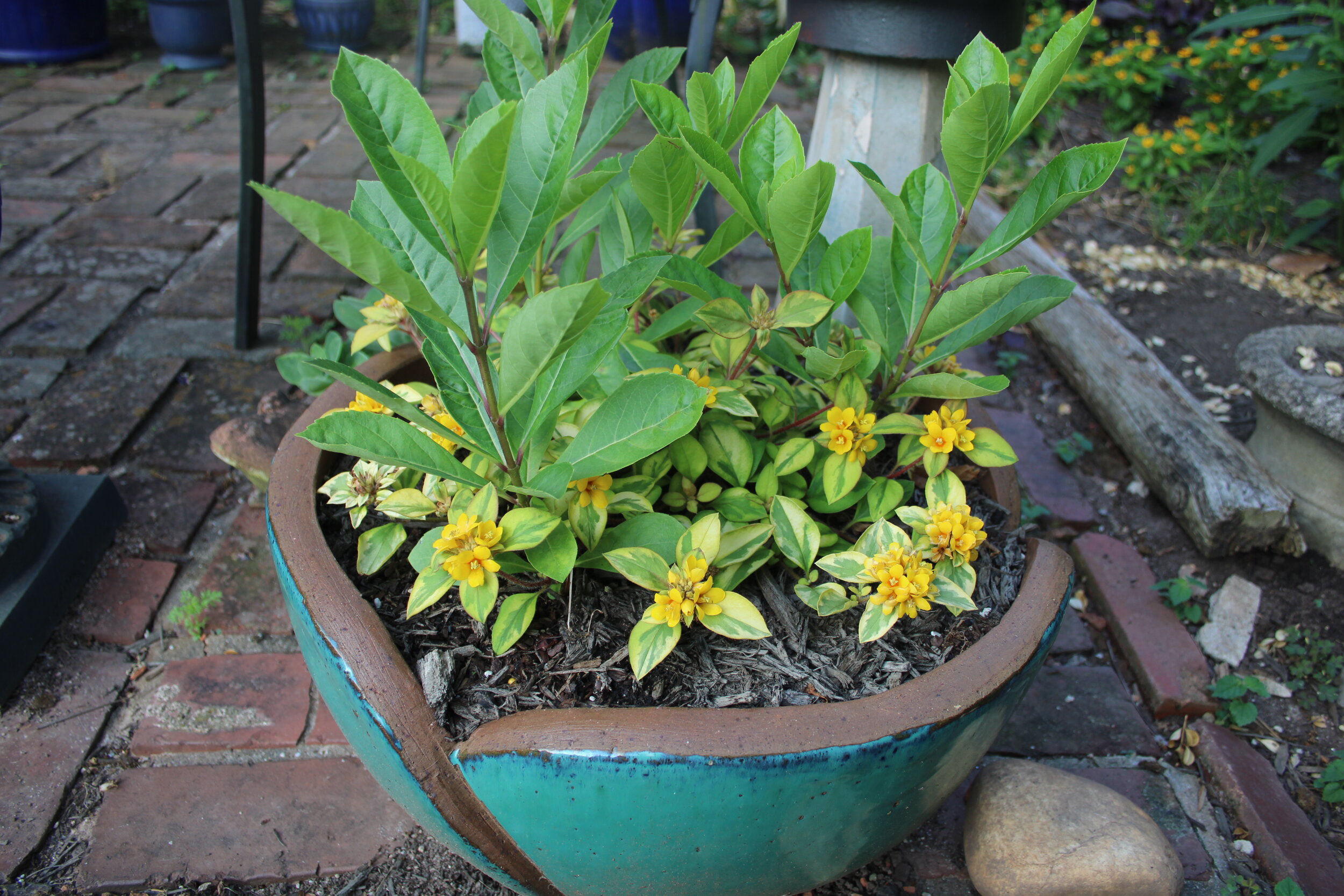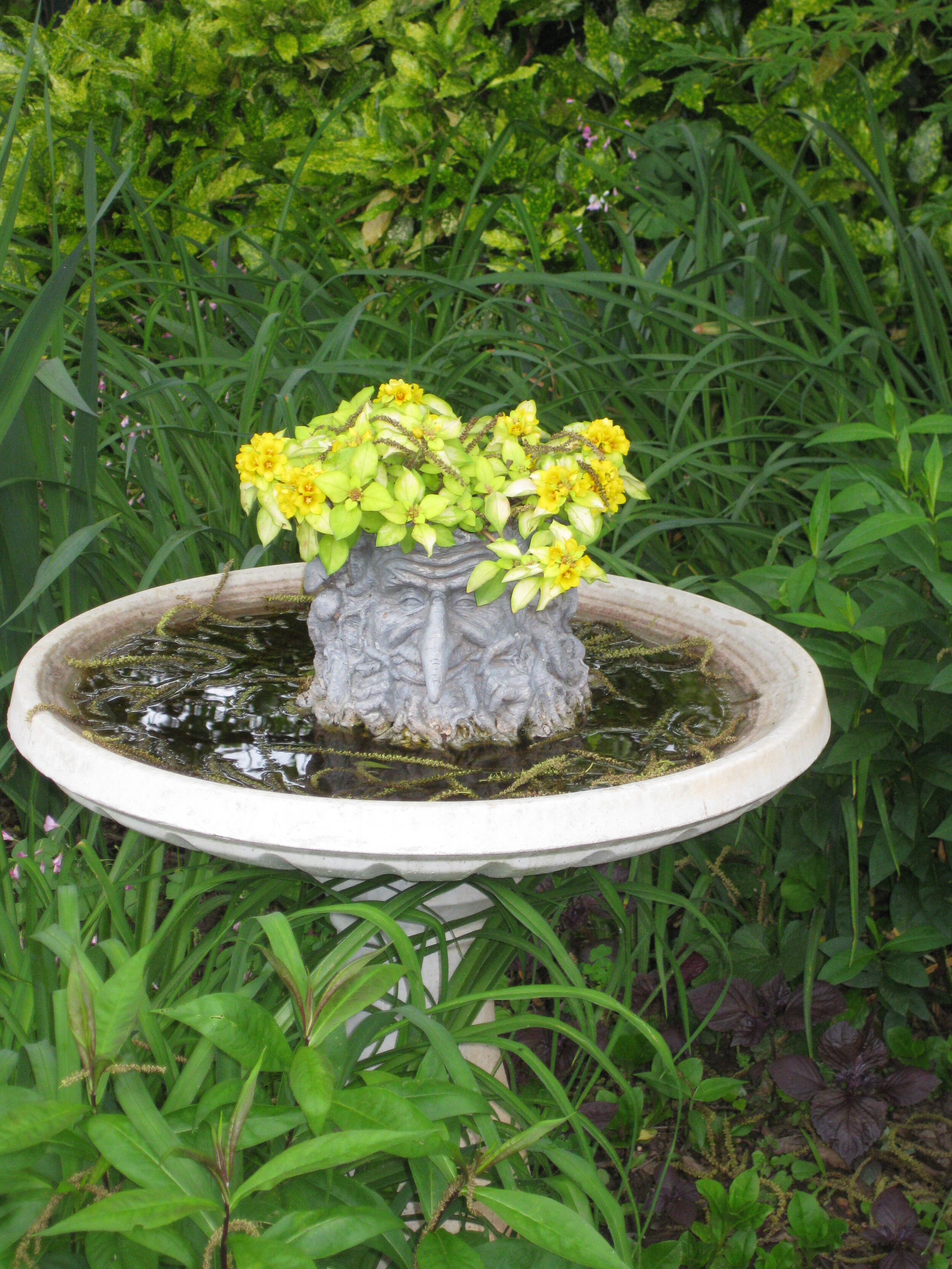The southeastern US typically has a few bitter cold days each winter, but our cold snaps rarely continue more than a day or two. The recent winter chill has been long-lasting and brutal. Even South Carolina’s coastal areas saw snowflakes this week, while piedmont and foothills are shivering in the “feels like” teens, even in daytime. Like many other gardeners, I am worried about the impact on my evergreen trees and shrubs. Tree roots are unable to absorb enough to replace moisture that has been stripped from conifer needles by cold winds. Dried out trees and shrubs may weaken, discolor, or even die. The Arbor Day Foundation has an excellent article on when and how to water trees in the winter. The short version: water trees once or twice per month when daytime temperatures are 40F and above. Click HERE to read the full article. Water evergreen containers weekly.
Our senior dogs are content to snooze indoors in their toasty beds, with their food and water bowls nearby. Our outdoor cats have heated cathouses and cat-door access to heated and insulated barns. We are doing our part to support wildlife, keeping birdfeeders full and fresh water available. While we have two creeks running through our woodlands, we also have water bowls all around the property. These are visited by raccoons, squirrels, opossums, skunks, foxes, coyotes, and deer.
Birds of all types cluster around our birdbaths. The birdbaths require regular attention because they are too distant from electricity sources to use water heaters. I assumed that filling these containers with warm or hot water would delay their freezing, but I have learned that warm water will actually freeze faster than tepid water. (Trigger warning: science speak to follow.) This counterintuitive phenomenon is called the Mpemba effect (pronounced em-PEM-ba).
Aristotle first hypothesized this phenomenon, but it was not named until 1963 when tested by a Tanzanian physics student named Erasto Mpemba. Without getting too technical, I can relate that hot water and cold water reach thermal equilibrium at different rates. When two samples of water are cooled, the hotter sample freezes (reaches equilibrium) first. Equilibrium exists when energy is neither flowing in or out of a substance. Water that has formed into ice has a stable volume.
Allow me to quote from an article from the HowStuffWorks website: “For water to freeze and stay frozen, individual water particles have to reach equilibrium. If too much energy surges through nonequilibrium water, it will fluctuate between solid and liquid (at low temperatures) or liquid and gas (at higher temperatures). The sooner that water particles reach equilibrium at low energy levels, the sooner they can freeze…When a vessel of water is submerged in a freezing environment, different parts of the water reach equilibrium at different times. Water around the outskirts of the vessel gets colder faster, which means that it may freeze while water in the middle of the vessel stays liquid. And when you specifically place a vessel of hot water in a freezer… it is also releasing steam from the top of the vessel, and this decreases the total volume of water that needs to freeze. Furthermore, cold water (or even room temperature water) often develops a layer of frost on its surface as part of the freezing process. Ironically, this frost temporarily insulates the water (kind of like how an ice igloo insulates its inhabitants against cold air), which can slow down the overall freezing process. Hot water, at least in the early stages, blocks the formation of frost, which allows cold air to penetrate deeper into the vessel.”
There has been ongoing disagreements and debate among scientists about the Mpemba effect. All sorts of factors come into play: contaminants in the water, size of the vessel, volume of the water, others. While undeniably brilliant, Aristotle and Descartes did not have access to the same laboratories that are available today. Which is why it is significant that the theory was successfully tested in modern times by Zhiyue Lu of the University of North Carolina and Oren Raz of the Weizmann Institute of Science in Israel. Their results were reported in Quanta magazine. Another test, conducted in 2020 by John Bechhoefer and Avinash Kumar, supported the earlier results and was printed in Nature magazine.
While it does not seem logical that my birdbaths will freeze faster when filled with hot water than with cold, I will bow to the professional physicists and change my ways. Our wildlife cannot speak, but I know they appreciate their water sources. And as soon as daytime temperatures become warmer, I will be out there watering my arborvitae, hemlocks, boxwoods, and euonymus while I long for spring’s arrival.


